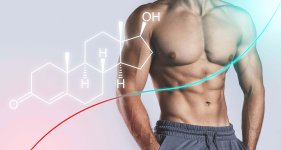Testosterone Replacement Therapy (TRT) has become a hot topic in recent years, especially among men experiencing symptoms of low testosterone. In Canada, an increasing number of individuals are exploring TRT as a solution to regain their vitality and improve their overall quality of life. However, with so much information available, it can be challenging to discern the essential facts about this therapy.
In this article, we will highlight vital information regarding TRT in Canada, helping you understand its benefits, risks, and what you need to consider before starting treatment.
Whether you're curious about how TRT works or seeking answers to common questions, this guide will provide you with the essential facts about TRT Canada you need to know.

Testosterone Replacement Therapy (TRT) is a medical treatment designed to restore testosterone levels in men who have low levels due to various reasons. Here’s an overview of the key aspects of TRT:
Testosterone plays a crucial role in various bodily functions, including:
A proper diagnosis often requires comprehensive testing and evaluation by a healthcare professional.

In Canada, there are several methods for administering testosterone as part of TRT. These include:
Testosterone Replacement Therapy (TRT) is administered in Canada through various methods, depending on the patient's needs and preferences. Here are the common methods of administration:
For anyone considering TRT or currently undergoing treatment, consulting with a healthcare professional who understands the complexities of hormonal therapy is vital for ensuring optimal results.
In this article, we will highlight vital information regarding TRT in Canada, helping you understand its benefits, risks, and what you need to consider before starting treatment.
Whether you're curious about how TRT works or seeking answers to common questions, this guide will provide you with the essential facts about TRT Canada you need to know.
Understanding Testosterone Replacement Therapy

Testosterone Replacement Therapy (TRT) is a medical treatment designed to restore testosterone levels in men who have low levels due to various reasons. Here’s an overview of the key aspects of TRT:
What is Testosterone?
Testosterone is a hormone primarily produced in the testes in men and in smaller amounts in ovaries in women. It plays a vital role in various bodily functions, including:- Muscle and bone health
- Fat distribution
- Red blood cell production
- Mood regulation
- Libido (sex drive)
Reasons for Low Testosterone Levels
Low testosterone, or hypogonadism, can result from several factors:- Aging
- Medical conditions (e.g., diabetes, obesity)
- Hormonal disorders
- Injuries to the testicles
- Certain medications
Testosterone plays a crucial role in various bodily functions, including:
- Maintaining muscle mass
- Regulating fat distribution
- Supporting bone density
- Enhancing mood and energy levels
A proper diagnosis often requires comprehensive testing and evaluation by a healthcare professional.
The Benefits of TRT
The potential benefits of TRT are extensive. Men undergoing this therapy may experience:- Increased Energy Levels: Many patients report feeling more energetic and less fatigued after starting TRT.
- Improved Mood: Testosterone can positively impact mood, reducing symptoms of depression and anxiety.
- Enhanced Libido: One of the most noticeable effects of TRT is an increase in sexual desire, which can improve relationships and overall quality of life.
- Better Cognitive Function: Some studies suggest that testosterone may help improve memory and cognitive performance.
- Increased Muscle Mass: TRT can help promote muscle growth and strength, making it beneficial for those looking to improve their physical fitness.
The Risks and Side Effects of TRT
While TRT can offer many advantages, it is not without risks. Some potential side effects include:- Acne and Oily Skin: Increased testosterone can lead to skin issues.
- Sleep Apnea: Some men may experience worsening sleep apnea or develop it after starting TRT.
- Increased Red Blood Cell Count: High testosterone levels can lead to an increase in red blood cell production, which may increase the risk of blood clots.
- Prostate Issues: There is ongoing debate about the relationship between TRT and prostate health, including potential risks for prostate cancer.
- Mood Swings: In some cases, patients may experience mood changes or irritability.
How TRT is Administered in Canada?

In Canada, there are several methods for administering testosterone as part of TRT. These include:
Testosterone Replacement Therapy (TRT) is administered in Canada through various methods, depending on the patient's needs and preferences. Here are the common methods of administration:
1. Injections
- Intramuscular (IM) Injections: Testosterone is injected into a muscle, typically every 1 to 4 weeks. Common sites include the thigh or buttocks.
- Subcutaneous Injections: Testosterone can also be injected under the skin, which some patients find less painful.
2. Transdermal Patches
- Patches are applied to the skin daily, allowing testosterone to be absorbed through the skin. They are usually placed on the back, abdomen, thighs, or upper arms.
3. Gels
- Testosterone gel is applied to the skin daily, often on the shoulders or upper arms. It provides a steady release of testosterone and is absorbed into the bloodstream.
4. Pellets
- Small pellets containing testosterone can be implanted under the skin, usually in the hip area. They release testosterone slowly over several months.
5. Oral Tablets
- While not as common due to potential liver side effects, there are testosterone tablets available that can be taken orally.
Prescription and Monitoring
- TRT requires a prescription from a healthcare provider after a thorough evaluation.
- Patients typically undergo regular blood tests to monitor testosterone levels and adjust dosages as needed.
5. The Importance of Monitoring Testosterone Levels
Regular monitoring of testosterone levels is vital for anyone undergoing TRT. This monitoring typically involves:- Baseline Testing: Before starting therapy, testosterone levels need to be established through blood tests, along with other relevant hormone levels such as estradiol and luteinizing hormone (LH).
- Regular Follow-Up Tests: After beginning TRT, follow-up blood tests are essential to ensure testosterone levels remain within a safe and effective range. These tests are usually conducted every three to six months during the first year of treatment.
- Health Assessments: Regular evaluations of prostate health, red blood cell counts, and overall health should also be part of ongoing care.
Conclusion
TRT can offer substantial benefits for men struggling with low testosterone levels in Canada. However, it is imperative to understand both the benefits and risks associated with this therapy. Proper administration, regular monitoring, and open communication with healthcare providers are crucial for achieving the best outcomes from TRT. By staying informed about these essential facts, individuals can make educated decisions regarding their health and well-being.For anyone considering TRT or currently undergoing treatment, consulting with a healthcare professional who understands the complexities of hormonal therapy is vital for ensuring optimal results.

